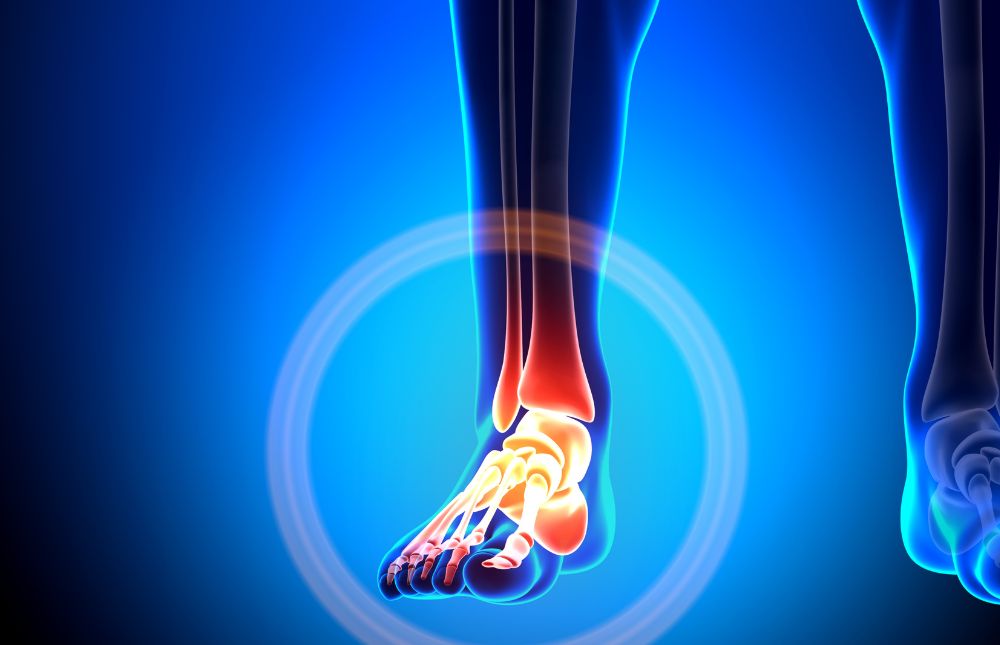Ankle fractures are the third most frequent cause of total fractures and generate functional alterations in the short and long term.
Ankle fractures are the third most frequent cause of fractures in all ages. Surgical treatment and the period of immobilization generate important functional alterations in the short and long term such as pain, stiffness, reduced range of motion (ROM), loss of proprioception or muscle weakness.
These functional alterations are the basis of the study of the research project “Functional assessment of the Plantar Achilles Calcaneal System (SACP) in patients after ankle surgery” conducted by researchers from the Gimbernat-Cantabria University School in collaboration with the Department of Traumatology and Orthopedic Surgery of Valdecilla Hospital: Dr. Mario Fernández Gorgojo and Dr. Diana Salas Gómez (EUG); Dr. María Isabel Pérez Núñez and Esther Laguna Bercero (HUMV); Pascual Sánchez Juan of the CIEN Foundation.
The aim of the study was to evaluate in patients with bimalleolar ankle fracture at 6 and 12 months after surgery, the functional limitations quantified by gait analysis, static/dynamic balance, clinical parameters and functionality scales. As a result of this project, 4 scientific articles have been published in impact journals (Sensors (2022 and 2023); Gait & Posture (2020); Journal Of Clinical Medicine (2022)).
The last published article “Analysis of dynamic plantar pressure and influence of clinical-functional measures on their performance in subjects with bimalleolar ankle fracture at 6 and 12 months post surgery” (SENSORS; 2023) analyzed dynamic plantar pressure and functional status in patients with bimalleolar ankle fracture at 6 and 12 months after surgery; and the degree of correlation with previously collected clinical variables. A total of 22 subjects with bimalleolar ankle fracture and 11 healthy subjects were included. Data collection was performed at 6 and 12 months after surgery and included clinical measurements (ankle dorsiflexion range of motion and bimalleolar/calf circumference), functional scales (AOFAS and OMAS) and dynamic plantar pressure analysis using a pressure platform. Significant differences were found between groups in mean/maximal plantar pressure, as well as in contact time at 6 and 12 months (effect size 0.63 ≤ d ≤ 0.97). Furthermore, in the ankle fracture group there is a moderate negative correlation (-0.435 ≤ r ≤ 0.674) between plantar pressures (mean and maximum) with bimalleolar and calf circumference. The AOFAS and OMAS scale scores increased at 12 months to 84.4 and 80.0 points, respectively. The study reflects that despite the evident improvement one year after surgery, the data collected using the pressure platform and functional scales suggest that recovery is not yet complete.
Following the results obtained in this research and after reviewing the existing literature, future objectives are to conduct clinical trials with a specific intervention program that would include therapies aimed at gaining joint range, strength programs and functional gait, balance or stair climbing tasks. Furthermore, in view of the functional deficits produced by this type of fracture in both the short and long term, the intervention programs should be more prolonged, individualized and with a follow-up of at least 1 year (including home work).
Ref. Analysis of Dynamic Plantar Pressure and Influence of Clinical-Functional Measures on Their Performance in Subjects with Bimalleolar Ankle Fracture at 6 and 12 Months Post-Surgery. Mario Fernández-Gorgojo, Diana Salas-Gómez, Pascual Sánchez-Juan, Esther Laguna-Bercero, María Isabel Pérez-Núñez. Sensors (Basel). 2023 Apr 13;23(8):3975. PMID: 37112316 PMCID: PMC10142754 DOI: 10.3390/s23083975






















